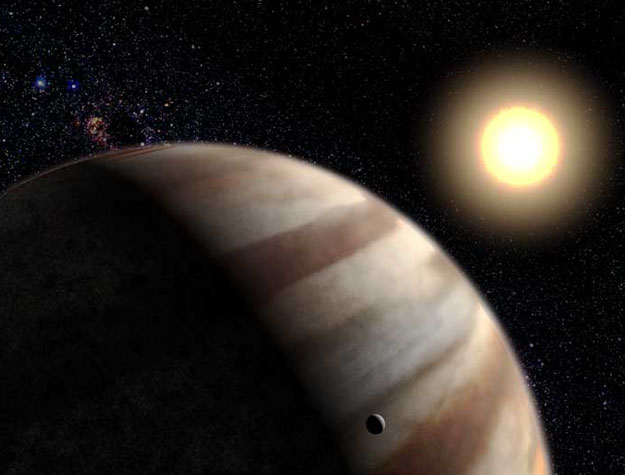Credit: Greg Bacon
(STScI/AVL)
Explanation:
By directly detecting the atmosphere of a planet outside our
Solar System, humanity has taken another small step toward
finding extraterrestrial
life.
The unexpected detection by
David Charbonneau
(Caltech)
and associates came from
Hubble Space Telescope
observations of
Sun-like star
HD 209458.
As an orbiting planet crossed between that star and the
Earth,
sodium in the planet's atmosphere
absorbed starlight at very specific colors.
The planet,
originally discovered two years ago,
has about 70 percent the mass of
Jupiter
but orbits very close in.
A long-term goal of
this type of research is the detection of planetary
biomarkers that would indicate
life, such as
oxygen,
water, or
methane.
1999 2000 2001 2002 2003 2004 2005 2006 2007 2008 2009 2010 2011 2012 2013 2014 2015 2016 2017 2018 2019 2020 2021 2022 2023 2024 2025 |
Январь Февраль Март Апрель Май Июнь Июль Август Сентябрь Октябрь Ноябрь Декабрь |
NASA Web Site Statements, Warnings, and Disclaimers
NASA Official: Jay Norris. Specific rights apply.
A service of: LHEA at NASA / GSFC
& Michigan Tech. U.
|
Публикации с ключевыми словами:
телескоп Хаббл - extrasolar planet - Планеты у других звезд - экзопланета - атмосфера - спектроскопия
Публикации со словами: телескоп Хаббл - extrasolar planet - Планеты у других звезд - экзопланета - атмосфера - спектроскопия | |
См. также:
Все публикации на ту же тему >> | |
